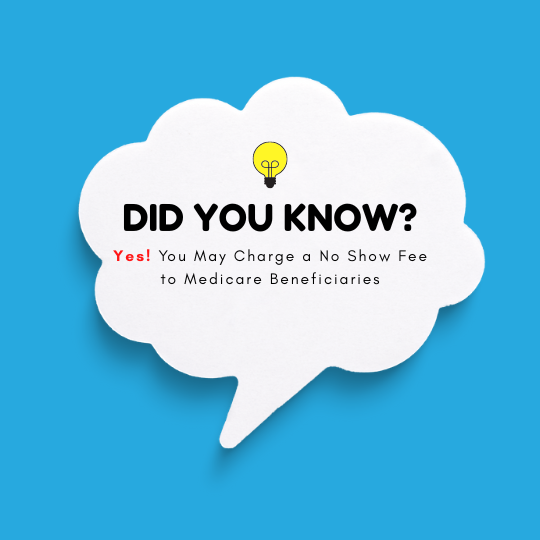What is a superbill for therapy? Physical Therapy, Occupational Therapy, Speech-Language Pathology
A superbill is a document created by the healthcare provider that includes all of the required billing information. It often includes CPT codes for services rendered, charges, units, and the NPI of the rendering provider. It includes the billing provider’s NPI and Tax ID as well.
A superbill may be given to a patient who plans to submit it to an insurance company for the reimbursement of out of network services, or it may be given to an internal billing department who will turn that information into a formal CMS 1500 form and submit that claim to an insurance company.
A superbill is just another way to say invoice and receipt. The best example of a superbill is the CMS 1500 claim form.
What should be included on a superbill?
A superbill should contain the following elements:
- Provider name, address, telephone number, and fax number
- Provider’s group NPI as the billing provider and personal NPI as the rendering provider
- Provider’s tax ID or employer identification number
- Patient information: name, address, telephone, date of birth, gender
- Patient insurance information is available
- Referring provider if available
- Treatment diagnosis
- Date of service
- CPT Codes, Number of Units Billed, Total Amount Charged per CPT Code
- Treatment location listed as facility address or patient’s home address
How does a cash-based therapist create a CMS 1500 superbill?
Watch the video below to see how you can create a free Office Ally account and create CMS 1500 superbills for your cash-based physical therapy or occupational therapy clients.
What does a CMS 1500 form look like?
Here is an image of a CMS 1500 form. These forms may be purchased from Amazon or other retailers.

Can I create my own superbill?
Yes, but it is not recommended.
If you hope to provide your patient with a superbill that will be submitted to an insurance company for possible out of network reimbursement then the best practice advice is to use a CMS 1500 as it is a universally accepted form.
It is also recommended that you submit an IRS W-9 form in addition to a copy of the physician referral, your initial evaluation, and other supporting documentation.
More Lessons...

How to Pick a Business Name for a Physical Therapy Practice in 2022
Let the Marketing Dept Pick a Business Name for Your Physical Therapy Practice. While your physical therapy business name is important, don't let it slow you down. Too many aspiring business owners stall for months in trying to choose a name. There are several...
25 Most Commonly Used Physical Therapy Abbreviations
25 Most Common Outpatient Physical Therapy Abbreviations in 2022 AAROM - Active Assisted Range of Motion AROM - Active Range of Motion CLOF - Current Level of Function CPM - Continuous Passive Motion DPT - Doctor of Physical Therapy ER - External Rotation GLOF - Goal...

PT vs PTA: Should I become a PT or PTA?
Should I Become a PT vs PTA in 2023? This is a great question. In my opinion, the main difference between choosing to become a PT vs PTA depends on your goals for the future. There is little difference in the salary, job opportunities, and fulfillment of both paths....
Will PTAs Be Phased Out in 2023?
Will PTAs be phased out of the physical therapy profession in 2023? Absolutely not! Physical therapist assistants are a vital part of the patient care experience. I believe the best way to preserve the future of physical therapist assistants in the physical therapy...

Can you Charge a Medicare Patient for a No Show Fee? 2022 Update
Can You Charge a No Show Fee to a Medicare Beneficiary? Yes, you are allowed to charge a no show fee to a Medicare beneficiary as long as you have an established no show fee policy for all patients at your practice. "According to Chapter 1, section 30.3.13 of the...

CPT Code 95992
CPT Code 95992 CPT 95992 – Canalith repositioning procedure(s) (eg, Epley maneuver, Semont maneuver), per day* Source: NGS A56566 Appropriate Diagnosis to Charge CPT Code 95992 H81.11 - Benign paroxysmal vertigo, right ear H81.12 - Benign paroxysmal vertigo, left ear...

Reason Code 4 | Remark Code N519 Physical Therapy Denial
Reason Code 4 Medicare Remarks: "The procedure code is inconsistent with the modifier used or a required modifier is missing." The most common reason for this denial is a missing professional discipline modifier. GP Modifier Physical Therapy GO Modifier Occupational...

How to Confirm a PT Patient has Traditional Medicare vs Medicare Advantage
Traditional Medicare vs Medicare Advantage Plans Medicare Part B Traditional Medicare is often referred to as Medicare Part B. This plan pays for outpatient services which include physical therapy in private practice. Medicare Part C Medicare Advantage plans are...

Medicare ABN Form: Physical Therapist In Private Practice
What is a Medicare ABN Form? According to the Medicare Claims Processing Manual Chapter 30 Section 50: " The ABN is an Office of Management and Budget (OMB)-approved written notice issued by healthcare providers and suppliers for items and services provided under...

Physical Therapy Medical Record Retention Laws in 2022
Medical Record Retention Law Question: "Can someone point me to the resources for how long to maintain medical records? "Currently, in 2022, the longest duration you must store medical records is 10 years according to § 3731. False claims procedure.How long is a...
